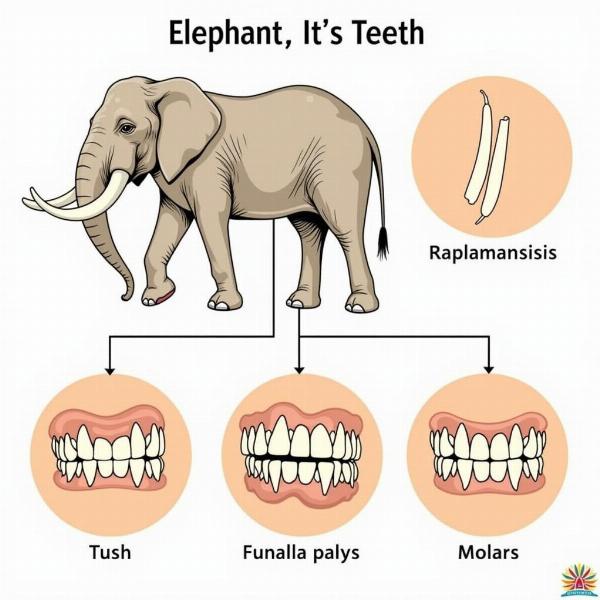Understanding “structurally meaning in Hindi” requires delving into how meaning is constructed within the Hindi language, considering its grammatical structure, word order, and the relationships between different parts of a sentence. It’s not simply about translating individual words, but grasping the underlying architecture that gives a sentence its full meaning.
Decoding “Structurally Meaning”: A Deep Dive
When we talk about “structurally meaning,” we are referring to the meaning derived from the way a sentence is organized in Hindi. This involves understanding the role of subject, object, and verb, as well as the various grammatical particles and inflections that contribute to the overall meaning. Hindi, being a Subject-Object-Verb (SOV) language, often places the verb at the end of the sentence. This structure inherently influences how meaning is conveyed and interpreted. For example, the sentence “राम ने रोटी खाई” (Ram ne roti khai) translates to “Ram ate bread.” The word order and the particle “ne” after “Ram” clarify that Ram is the subject performing the action.
The Importance of Word Order in Hindi
Word order plays a crucial role in conveying structurally meaning in Hindi. Changing the order can significantly alter the meaning, sometimes even leading to nonsensical sentences. While some flexibility exists, especially in poetry or informal conversation, the standard SOV structure provides clarity and avoids ambiguity. The position of adjectives, adverbs, and other modifying words also contributes to the overall meaning.
Grammatical Elements and Structurally Meaning
Hindi utilizes various grammatical elements, including postpositions, case markers, and verb conjugations, to convey meaning. Postpositions, which function similarly to prepositions in English, indicate the relationship between words. Case markers, attached to nouns and pronouns, denote their grammatical function in the sentence. Verb conjugations reflect tense, aspect, mood, and person. These elements work together to build a complex web of meaning that goes beyond the literal translation of individual words.
Structurally Meaning and Context
Like any language, understanding structurally meaning in Hindi also requires considering the context. The same sentence can have different nuances depending on the situation and the relationship between the speakers. Cultural factors also play a role in shaping the meaning of certain expressions and idioms.
Structurally Meaning vs. Literal Meaning
It’s crucial to differentiate between structural meaning and literal meaning. While understanding the individual words is important, simply translating them word-for-word might not capture the intended meaning. Structurally meaning takes into account the grammatical relationships and the overall structure of the sentence, providing a more accurate and nuanced understanding. For instance, the Hindi idiom “हाथी के दांत खाने के और दिखाने के और” (Hathi ke daant khane ke aur, dikhane ke aur) literally translates to “An elephant’s teeth are for eating and for showing.” However, the structural meaning, enriched by cultural context, conveys the idea that one thing might be suitable for one purpose and another for a different purpose, like the elephant using different sets of teeth for different functions.
 Elephant's teeth and their different functions
Elephant's teeth and their different functions
Conclusion
Understanding structurally meaning in Hindi is essential for anyone seeking to truly grasp the language. It involves moving beyond a simple word-for-word translation and appreciating the intricate interplay of grammar, word order, and context. By studying the grammatical structure and paying attention to how sentences are constructed, one can unlock a deeper level of understanding and fluency in Hindi.
FAQ
- What is the basic sentence structure in Hindi? Hindi typically follows a Subject-Object-Verb (SOV) structure.
- Why is word order important in Hindi? Word order is crucial as it can change the meaning of a sentence.
- How do postpositions contribute to structurally meaning? Postpositions indicate relationships between words, clarifying their roles in a sentence.
- What is the difference between structural meaning and literal meaning? Structural meaning considers the grammatical structure, while literal meaning is a word-for-word translation.
- How does context influence structurally meaning? Context helps clarify nuances and implied meanings, especially with idioms and cultural expressions.
Meaning-Hindi.in is your trusted partner for all your Hindi translation needs. We offer a wide range of professional translation services, including business and commercial document translation, certified and legal document translation, technical and user manual translation, website and localization services, educational and academic document translation, express translation, and specialized translations across various industries. Whether you need to translate give way meaning in hindi or understand complex phrases like dravidian meaning in hindi, our team of expert linguists ensures accurate and culturally sensitive translations. We also offer specialized translations for technical terms like soundness meaning in hindi or colloquial terms like wobbly meaning in hindi, always striving to capture the intended meaning accurately. We understand the nuances of the language and ensure your message resonates with your target audience. Contact us today at [email protected] or call us at +91 11-4502-7584. Meaning-Hindi.in is your one-stop solution for high-quality, reliable Hindi translation services. We are dedicated to bridging the language gap and helping you connect with the Hindi-speaking world. For more insights, explore the meaning of terms like kamzor meaning in hindi.